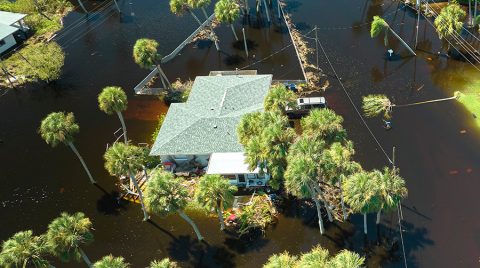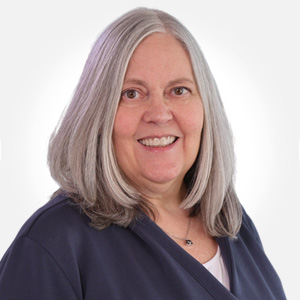-
Property & Casualty
Property & Casualty Overview

Property & Casualty
We offer a full range of reinsurance products and the expertise of our talented reinsurance team.
Expertise -
Life & Health
Life & Health Overview

Life & Health
We offer a full range of reinsurance products and the expertise of our talented reinsurance team.
-
Knowledge Center
Knowledge Center Overview

Knowledge Center
Our global experts share their insights on insurance industry topics.
Trending Topics -
About Us
About Us OverviewCorporate Information

Meet Gen Re
Gen Re delivers reinsurance solutions to the Life & Health and Property & Casualty insurance industries.
- Careers Careers
Four Drone Insurance Questions - You Should Have the Answers

March 22, 2017
Jill Tumney
Region: North America
English
224% - that is how much the sale of drones grew in just a three-month period in 2016.
Drones are taking off among businesses and consumers in the U.S., and that presents risks and opportunities for insurers. All this popularity is generating questions, including the four most common ones we answer here. Are they your questions, too?
Q: Are recreational drone flyers regulated the same way as businesses, and what are the insurance implications?
A: The federal rules issued in 2016 are not the same for commercial and recreational use. Regulations for hobby drones are far less stringent, with the most significant difference related to pilot knowledge. The hobby flyer need only be 13 years of age and pilot certification is not required. Most safety requirements are the same for all users, but the operator qualifications alone make the exposures very different.
As a result of these differences, we find that insurers might be willing to extend protection for commercial operations while expressing reluctance on covering personal use. Do you think that the average certified pilot is more likely to know and abide by the rules than the average teen? Hobbyists may be able to find coverage through clubs or “pay as you go” policies, if they are not already protected under a traditional Homeowners program. More on this later.
Q: Do farm owners have to comply with these rules?
A: Farms must comply with the same rules applicable to other commercial users. By obtaining a remote pilot certification (or hiring/having available someone with that qualification), farm owners can fly drones as long as they satisfy the basic safety requirements, e.g., under 55 lbs, not over crowds, etc. Many farm owners are obtaining pilot certification, and we expect that trend to continue.
Underwriters have gotten reasonably comfortable with crop inspection and other agricultural uses, even before the rules came out, but a few concerns remain. Environmental damage is one issue, so it’s not surprising to see exclusions for pollution-related operations. Other insurance limitations might apply to drone size or usage.
Q: What coverage options are available from ISO and AAIS?
A: The landscape for drone endorsements is still spotty, particularly for farm risks. ISO filed a suite of commercial liability endorsements for granting as well as excluding coverage, grouped around BI & PD (Coverage A), P&AI (Coverage B), and both. The coverage endorsements include a schedule where insurers can customize by identifying a particular drone or acceptable operations.
In the personal lines arena, both the ISO and AAIS homeowners policies include coverage for model and hobby aircraft as long as they are not used to carry persons or cargo. ISO has filed an optional Homeowners endorsement to exclude coverage for unmanned aircraft, whether “model or hobby.” ISO has also filed an optional endorsement for use when providing Personal Injury coverage; that endorsement excludes PI arising out of all aircraft, including unmanned, model and hobby. As for farms, ISO does not yet offer a tailored solution. AAIS has filed exclusions as well under their Commercial Farm suite, but that is not often used for the family farm. We still await comprehensive Bureau solutions for this industry. For more detail on all of these options, see Gen Re’s Casualty Matters – Drones and Insurance.
Q: Do Umbrella insurers have any special considerations for underwriting drone risks?
A: A major umbrella insurance consideration is always dropdown exposure. ISO has commercial umbrella endorsements that mirror those for the primary, but are they aligned when used? The umbrella carrier needs to be aware of what coverage is attaching to the underlying when using these endorsements. As an alternative, the umbrella carrier may wish to consider the CU Unmanned Aircraft Following Form endorsements that ISO filed and became effective November 2016.
ISO has not yet filed any personal umbrella endorsements so the dropdown potential is greatest here. If the homeowners policy attaches the ISO drone exclusion but the personal umbrella carrier does not (whether it’s a proprietary or future ISO exclusion), the umbrella carrier may have more exposure than it was planning on having. Primary and umbrella alignment is a recurring theme whenever new forms are introduced to the market.
Got drone insurance questions? Any underwriter with questions around drone risk and insurance options should take a look at our recent Casualty Matters article. Also, USAIG’s Andrew Spiegel shares his perspective on commercial drone coverage, which is available from USAIG. Or give us a call.








